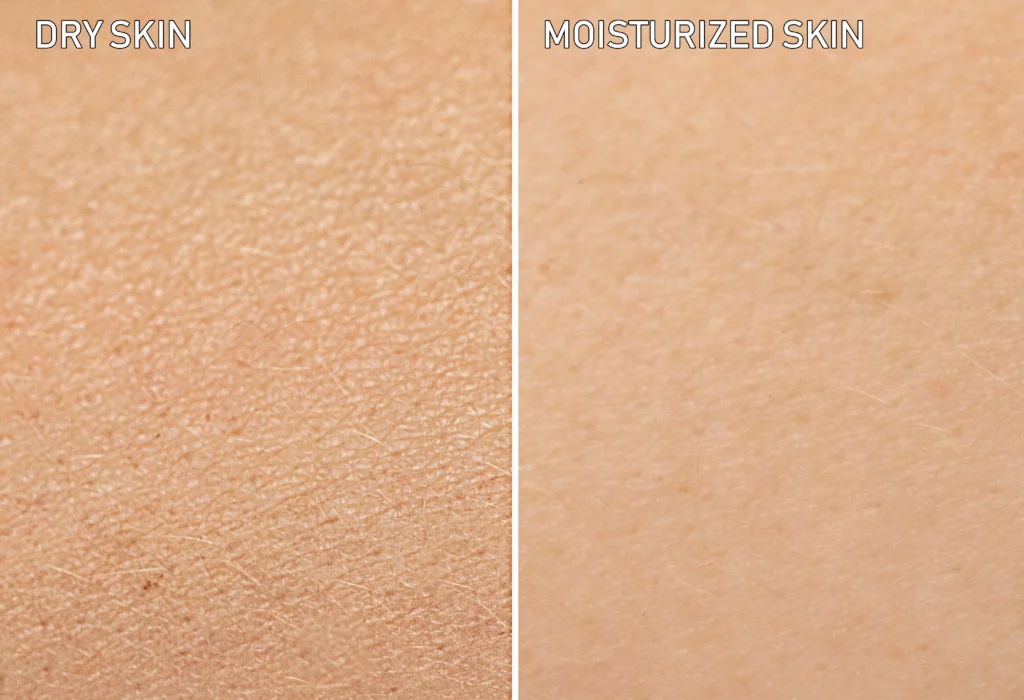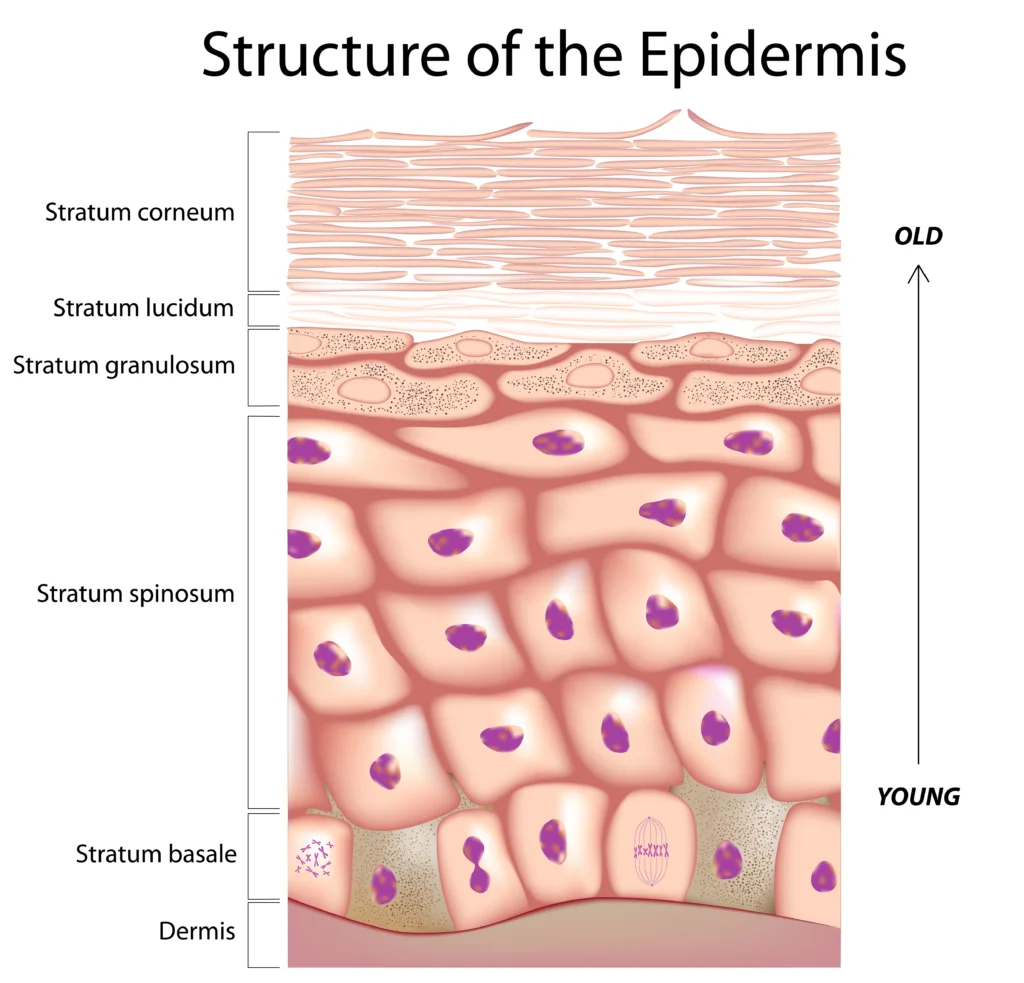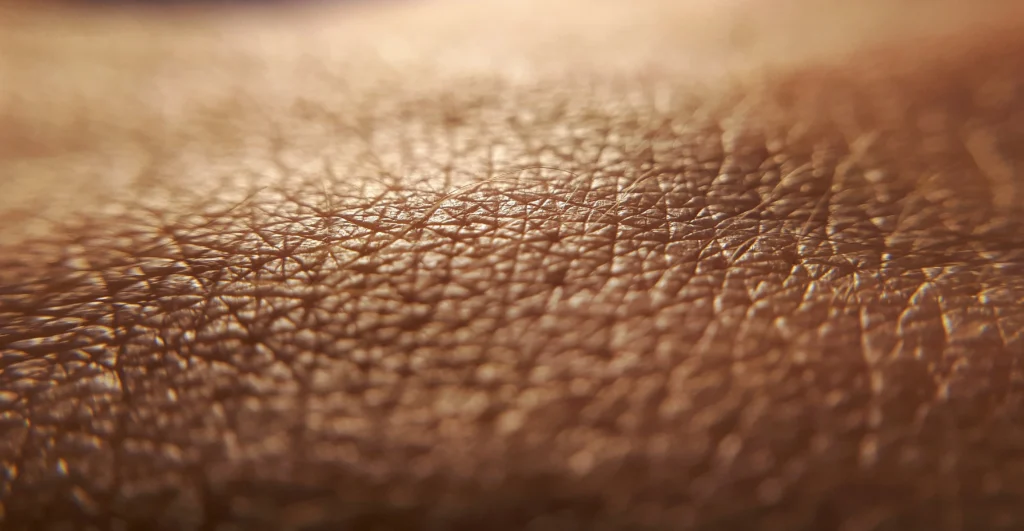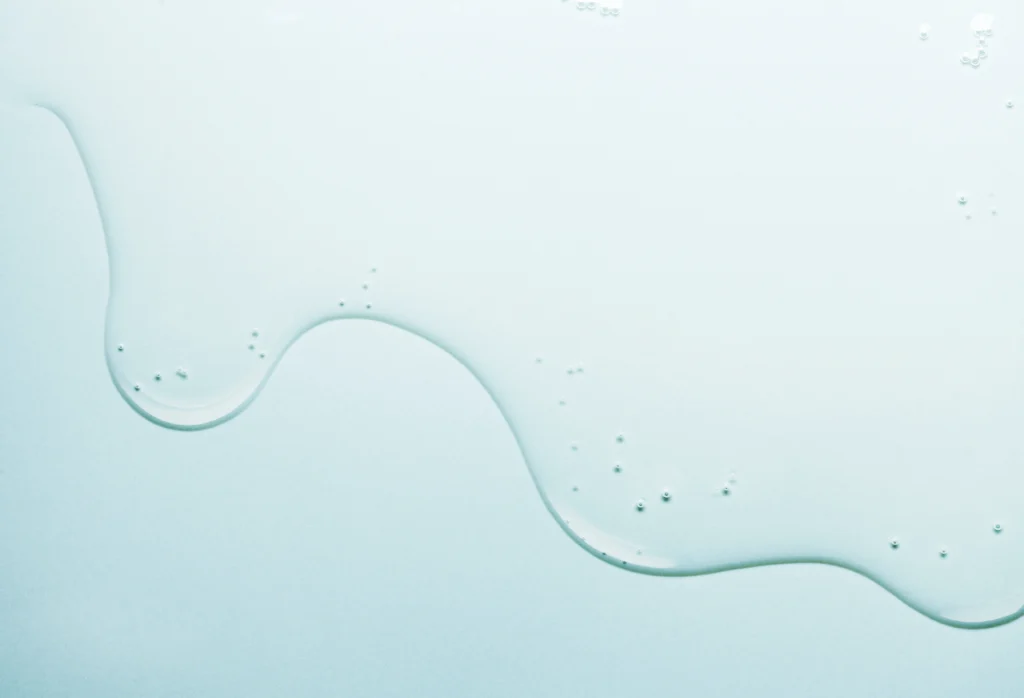
It’s fascinating to think that people have been in pursuit of smooth skin for thousands of years. Ancient civilisations from Latin America to Native American Tribes and Ancient Sumerians have relied on natural ingredients such as minerals, pulverised plants, animal fats and tree oils to keep their skin soft.
However, it wasn’t until the 2nd century that cream was invented. Up until then, these ointments were primitively formulated. The Greek Physician Aelius Galenus was the first to create a moisturising cold cream using rose oil, beeswax and water emulsion.
Fast-forward to today, and we have a plethora of moisturisers and creams to choose from, some more effective than others.
Key Takeaways
- Moisturisers work by replenishing and retaining moisture in the skin.
- The skin’s outermost layer, the stratum corneum, is crucial for regulating skin moisture and preventing excessive water loss (TEWL).
- NMF (Natural Moisturising Factor) is the skin’s natural moisturiser and plays a vital role in maintaining skin health.
- Understanding the 4 pillars of a moisturiser – humectants, occlusives, emollients, and keratolytics – can help you choose the right product.
- The skin’s natural ability to retain moisture can be compromised by various factors, necessitating the use of moisturisers.
How Does Skin Moisturisation Work?
Before we talk about moisturisers, we need to understand the structure and function of the skin.
The Structure of the Epidermis
The skin has 3 layers: Epidermis (the outermost layer), Dermis (the middle layer) and Hypodermis (also known as the subcutaneous layer is the innermost layer). Our main focus in this article is the epidermis.
The epidermis sits at the very top of the skin. It is composed of layers that gradually rise to the surface over time and eventually break down. This unique mechanism protects the beneath layers from external contamination and is mainly composed of Keratinocytes.
Within the epidermis, there are multiple layers.
The bottom layer, where new skin cells are born, is called the basal layer.
Above this, we find the “spiny” layer (stratum spinosum), which is made up of several layers of polyhedral cells. Next comes the “granular” layer (stratum granulosum), which is located between the stratum spinosum and stratum corneum on the face. In other areas where skin is thicker we have an additional layer that sits between stratum granulosum and stratum corneum called stratum lucidum.
And finally, at the top, there’s the “horny” layer, or stratum corneum, which consists of fully differentiated keratinocytes called corneocytes. This layer is which is mainly composed of dead skin cells and serves as a barrier protecting the body from the external environment.
Now that we know the layers of the skin, it’s time to see how they interact to form a protective barrier.

How the Epidermis Functions
To maintain its balance (known as homeostasis), the epidermis relies on a system of internal and external signals. These signals work together to regulate various cellular processes:
- Cell proliferation: The creation of new skin cells. This is essential for skin integrity as it replaces old or damaged cells.
- Cell migration: The movement of newly formed skin cells from deeper layers to the surface. This ensures a constant supply of cells to replace those that are shed.
- Cell differentiation: The transformation of skin cells into specialised types. This allows for the formation of different layers within the epidermis, each with a specific role in protecting the body. This process is tightly controlled to maintain a constant epidermal thickness.
- Extracellular matrix production: The creation of the supportive framework around skin cells. This matrix provides structural support, aids in cell adhesion, and contributes to the overall skin barrier function. In essence, the extracellular matrix acts as a bonding agent, holding everything together and ensuring the proper functioning of the epidermis.
The culmination of this process is the formation of the stratum corneum. The stratum corneum plays a crucial role in regulating skin moisture. Its integrity is essential for preventing excessive water loss (TEWL). When damaged, the stratum corneum leads to increased TEWL, manifesting as dryness, cracks, irritation, and reduced skin flexibility.
These processes are interconnected and regulated to maintain epidermal balance. An imbalance in any of these processes can lead to skin disorders or abnormalities.
How Healthy Skin Looks Like?
Healthy skin is balanced skin and ideally, our skin’s outer layers hold just the right amount of moisture. This delicate balance helps protect us from the external environment.

Unfortunately, we don’t live in an ideal world where the balance is unaffected—quite the opposite.
Factors like the environment and the natural ageing process can disrupt this balance, making the skin barrier harder to maintain.
Our skin is constantly bombarded by environmental aggressors. Things like air pollution, the sun’s harmful rays, harsh cleansers, and even the friction from towels can leave our skin feeling dry, irritated, or even damaged.
When the skin barrier is compromised, its ability to retain moisture is reduced. This allows water to traverse the lipid bilayer (the fatty layer between skin cells), between the corneal skin cells, and reach the surface of the skin.
And so, to have healthy skin, one key aspect is to control the skin’s moisture content.
And how do we achieve this?
By using skincare products that have moisturisers, humectants and emollients.
What is NMF and Why is it Important?
The skin naturally balances ingredients to keep itself soft and supple. This built-in moisturiser is called NMF (natural moisturising factor) and it consists of substances that can attract water molecules from the surrounding environment and draws it into the corneocytes.
The main substances found in NMF are amino acids, urea, ceramides, hyaluronic acid, lactic acid, sugar and minerals such as sodium, potassium, and magnesium.
So, the role of NMF is to keep your skin (stratum corneum) hydrated and flexible. A well-hydrated stratum corneum is essential for:
- Skin elasticity and resilience: Protecting the skin from damage.
- Efficient skin cell turnover: Allowing enzymes to function correctly.
- Strong skin barrier: Protecting the body from external threats.
We’re working on an article about NMF where we will go in depth.
The 4 Pillars of an effective Moisturiser
First, we need to define a moisturiser because the term “moisturiser” is often misused interchangeably with its individual components.
A moisturiser is more accurately understood as a combination of humectants, occlusivity agents, keratolytic agents, and skin-enhancing emollients rather than a singular entity.

These ingredients aim to mimic the moisture-modulating characteristics of the skin, improving its condition and restoring it to a healthier state.
Why is it important to differentiate these terms? Because each ingredient targets specific concerns.
1. Occlusive Agents
Occlusive agents are substances that coat the skin (stratum corneum) preventing moisture loss. They work by reducing the transepidermal water loss (TEWL), thereby maintaining hydration levels.
Some known occlusive agents are petrolatum, mineral oil, and dimethicone.
Occlusives are particularly effective for extremely dry skin conditions as they create a robust barrier against moisture loss. A strong barrier shields the skin from external stressors and by preventing moisture loss, they can contribute to the skin’s natural repair process.
However, due to their occlusive nature, they can feel greasy or heavy on the skin. That’s why occlusives often work in synergy with humectants to create a balanced moisturising effect.
Humectants draw moisture into the skin, while occlusives prevent its escape.
This leads us to the next ingredient: Humectants.
2. Humectants
Humectants are hygroscopic in nature which means that they actively absorb and retain moisture from the surrounding environment and deeper skin layers.
By modulating moisture content within the epidermis and dermis, they contribute to optimal skin hydration. This process is influenced by the relative humidity of the atmosphere.
Some of the most popular ingredients that have humectant properties are hyaluronic acid, glycerin, urea, sorbitol and sodium PCA.
Despite their unique ability, humectants alone have limited efficacy in enhancing skin hydration. That’s why it’s important to formulate humectants in combination with occlusivity agents.
3. Keratolyc agents
Keratolytic agents are substances that help to remove dead skin cells by softening keratin. Keratin is a protein produced by keratinocytes and is designed to protect the skin. By removing the top layer of dead skin cells, keratolytic agents aid in the absorption of other treatments and enhance the penetration of other topical medications.
They are often used to treat conditions characterised by excessive skin buildup, such as: Acne, Psoriasis, Eczema, Warts Calluses and more.
Examples of keratolytic agents are BHA’s (such as salicylic acid), Aha’s (such as lactic acid and glycolic acid), retinoids, and allantoin.
4. Emollients
Emollients are specific ingredients within moisturisers that help to soften and protect the skin. Some can prevent moisture loss by forming a protective barrier on the skin, similar to occlusive agents. Others display humectant properties by retaining moisture in the skin, similar to humectants.
However, their primary function is to soften the skin and enhance the formulation by improving the solubility of less compatible ingredients.
They modify the skin’s surface characteristics, facilitating the absorption of active ingredients. They do so by filling in gaps between the skin cells.
Before You Leave
We know that picking the right skincare products can be challenging. To help you navigate the vast array of options, we wrote an article on choosing skincare products titled: “How to Choose Skin Care Products: A Simplified Guide for All Skin Types”.